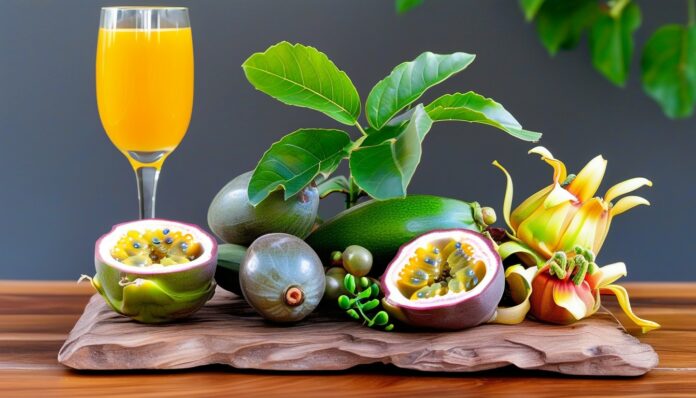Many people can easily recognize passion fruit by its appearance and taste, but not everyone knows some of the interesting and curious details about it. These facts can enrich your knowledge about this amazing fruit.
Variety of Names
Passion fruit has several names: passiflora, passionflower, passion fruit, and purple granadilla. Most of these names come from its Latin designation, but some have arisen from comparisons.
Is Passion Fruit a Pomegranate?
Passion fruit is sometimes called “granadilla” due to its striking resemblance to pomegranate seeds.
The Passion of Christ
The names “passionflower” and “passion fruit” are linked to the Passion of Christ: the three nails of the crucifixion, Christ’s five wounds, the crown of thorns, and the 10 apostles who remained faithful.
Origin and Distribution
Passion fruit originates from Brazil. Today, it is primarily cultivated in the Southern Hemisphere.
National Plant
Passiflora is considered the national flower of Paraguay.
Fruit Colors
Passion fruit comes in two colors: bright orange and dark purple.
Fruit Juice
Passion fruit is about 45% juice, which has a tonic effect.
Passion Fruit Seeds
The seeds of passion fruit have a sedative effect on the human body. Eating the seeds of one fruit can induce 6–8 hours of sleep.
Medicinal Properties
Passion fruit has mild diuretic and laxative effects. It is also used to treat asthma and reduce symptoms of gout and rheumatism.
What Else Can Passion Fruit Do?
People in South Africa and the Americas use this fruit as a natural fever reducer and antimicrobial remedy.
Cosmetics
Passion fruit’s leaves and fruit are widely used to make cosmetic products.
Ripeness of the Fruit
To determine if a passion fruit is ripe, experts recommend examining the appearance. Signs of ripeness include a cracked and rough skin.
